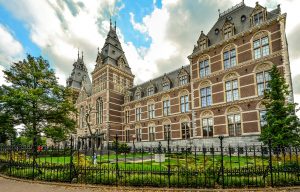Reminiscences of artisanal Christmases in Italy
The art of making traditional ornaments in the Piedmont region
At the foot of the Alps, in the region that is called Piedmont, lived a little old lady… No, she was not the befana. The befana is the lady who, on Epiphany Eve, on January 5, delivers little presents to the children of Italy. Gliding through the gelid night on her broomstick, made rigorously of sorghum, wearing a wool shawl and big boots, she is a cherished friend of good children, to whom she delivers candy. Unlike Santa Claus, who leaves naughty children empty-handed, she punishes them with a lump of coal…
But I digress. So the point was, the little old lady at the foot of the Alps was not the befana. She was in fact the mother of my kindergarten teacher, a tiny lovely octogenarian who made tiny lovely miniature houses as Christmas decorations. These were exact replicas of the traditional, slated roof, stone houses found at the low heights of the Piedmontese Alps of Northern Italy, with slate roofs.

Their weatherbeaten look, coupled with the earthly grey tones of the stones, gives them a sense of perpetuity, and inextricably links them to the terrain that becomes increasingly more hospitable as one descends these colossally imposing mountains. And just like the mountains themselves, which act as a shield to more severe weather, surrounding the city of Turin like a pair of embracing arms, these slate-roofed houses once acted as shields for the cowherds and shepherds who brought their furry friends to graze in the rich emerald green fields of the Aosta region.
Atop the wooden structures of the diminutive houses were placed elongated, thin rock slates that were used as shingles, laid dry and held in place by large metal pegs. Such combinations have resisted snow and wind for centuries, and the majority of houses in these areas have witnessed wars, disasters, prosperity and change. And yet, they still stand. In fact, it is legally required for houses in areas designated as historical sites to have these types of roofs, and none else.
But let us come back, once again, to our lovely little lady, who was not the befana but who did live at the foot of the Alps. Angela was known for making these miniature reproductions of these perennial little slate-roofed houses. They were in fact masterful recreations faithful to the originals down to the last detail, including glass windows with pots of red flowers on the windowsills, broomsticks laid against walls (the befana may figure in the story after all then) – forming in fact perfect dollhouses for characters of a bygone era to inhabit. These creations were usually put on elaborate displays created by her son in law, with elevations between the houses to suggest the rises and hills of the Aosta valleys, with their sharp mountainous rises and pastoral planes. A light system would also be created that gave illumination to several of the windows, protruding a warmth that set shadows on the woolen snow that duly covered the ground and rooftops. One year there was even an occasional puff of smoke coming out of the chimney of one of the houses farthest up.
The original models of Angela’s houses are most usually found in valleys and plane areas, bucolic scenes surrounded by more rough accumulations of rock (formations called “rocciaie” in Italian) caused millennia ago during earthquakes that shaped the mountains. Thick pine tree forests also abound in the environs, covering the soil in a velvet cape of deep bottle green. On windy days, the tops of the pines would gently waltz to the lilting rhythms of Aeolus, and their needles would play a light, hypnotizing tune. Walking through the pine woods (“pinete”) in such conditions, one is always invited to indulge in a nap on the velvet blanket of the moss underneath the pines, and be crooned to repose by nature’s orchestra.
Such conifer trees were, in a similar way to Angela’s houses, recreated for festive occasions by a little old man. Although he missed the white beard, he had a rightly impressive white moustache, from which emerged a naughty little grin, just like that of children when they’re about to get put to some fun mischief. Next were a pair of rosy cheeks and a pair of tiny, playful eyes completed the portrait, and, coupled with his mountainous build, one could not help but be reminded of Santa Claus.
Well, it was he, Luciano, who was the author of another wonderful artisanal Christmas work of art. These were tiny Christmas trees made of none other than pine cones. He would collect the cones during the summer holidays, on long walks through the Alpine woods, and then take them back home in the city to craft his unique arts and crafts pieces. Anyone who received one as a gift cherished it, and I am proud to say that mine still comes out every Christmas, and despite its growing fragility, it still holds the place of honour as one of the most striking, yet humble, ornaments of the festive season, serving as a reminder of the true traditions of Christmas in the Piedmont region of Italy. And so, these two gentle figures from many Christmases ago, like the befana and Santa Claus, shaped my experience of this special season, intensifying my connection with these traditional values.

Design by Giulia Cristofoli


